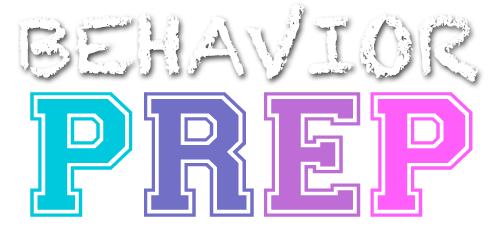H.1 State intervention goals in observable and measurable terms
When a BCBA states intervention goals in observable and measurable terms, they use a systematic approach to ensure clarity, objectivity, and accountability in the behavior-change process. Here’s a description of how a BCBA would go about stating intervention goals in observable and measurable terms:
Identify the Target Behavior
The BCBA starts by clearly identifying the specific behavior they want to address. This behavior should be well-defined, observable, and measurable. It should clearly describe the behavior and leaves no room for interpretation.
Example: The target behavior could be “John will initiate a conversation with a peer during recess.”
Define Operational Definitions
The BCBA provides a clear and concise definition of the target behavior using objective and specific terms. Operational definitions remove ambiguity and ensure consistency in measuring the behavior across different observers or settings.
Example: The operational definition of initiating a conversation with a peer during recess could be “John will approach a peer, make eye contact, and verbally greet the peer using a complete sentence, such as ‘Hi, how are you?'”
Specify Measurement Criteria
The BCBA establishes specific criteria for measuring the target behavior. These criteria include the relevant dimensions of the behavior, such as frequency, duration, latency, or intensity, depending on the nature of the behavior.
Example: The BCBA may set a measurement criterion of at least three instances of initiating a conversation with a peer during a 10-minute recess period.
Select Measurement Tools
The BCBA chooses appropriate measurement tools or data collection methods to gather objective data on the target behavior. These tools can include event recording, duration recording, latency recording, or other measurement techniques.
Example: The BCBA may use event recording to track the number of times John initiates a conversation with a peer during recess. They may use a tally counter to mark each occurrence.
Establish Baseline
Before implementing the intervention, the BCBA establishes a baseline by collecting data on the target behavior in its natural setting. This provides a comparison for measuring progress during the intervention phase.
Example: The BCBA may observe and record the number of times John initiates a conversation with a peer during multiple recess periods over several days to establish a baseline frequency. Based on the baseline data and the desired outcome, the BCBA sets specific, measurable goals for the intervention. These goals should be achievable, realistic, and time bound.
Example: The BCBA may set a goal for John to increase his frequency of initiating conversations with peers to at least five instances during a 10-minute recess period within four weeks of intervention.
By stating intervention goals in observable and measurable terms, the BCBA ensures that progress can be accurately assessed, intervention effectiveness can be evaluated, and appropriate modifications can be made as needed. This approach promotes accountability and helps track the individual’s progress toward desired behavior change.
